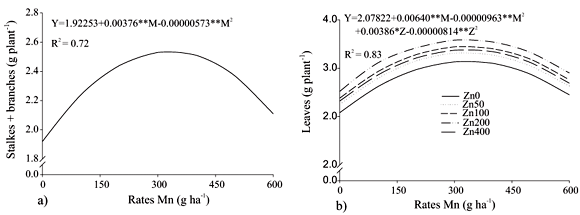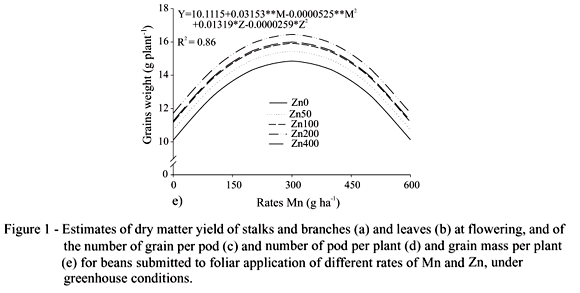The occurrence of micronutrient deficiencies, mainly of manganese (Mn) and zinc (Zn) in "cerrado" soils, has been increasing in several crops, including bean. Such a problem is caused by high rates of liming material applied entirely on the soil surface. In this study, the effects of the leaf application of Mn and Zn rates were evaluated. Three experiments were carried out: two in greenhouse and one under field conditions. The greenhouse experiments were set up using a randomized block design and a 5 x 5 factorial, with three replicates, consisting of five rates of Mn (0, 75, 150, 300, and 600 g ha-1) and five rates of Zn (0, 50, 100, 200, and 400 g ha-1) applied via leaves at the 25th day, or both alternatively parceled at 25 and 35 days after emergency (DAE), respectively, for the first and second experiments. In the field experiment, a randomized block design was used with four replicates, and the same treatments as those used in the greenhouse. Leaf applications performed at 25 and 35 DAE were efficient in correcting the symptoms of the Mn and Zn deficiencies. The combined application of Mn and Zn caused an increase in plant height, primary yield components as number of grains per pod, number of pods per plant, and productivity itself. The maximum technical efficiency was obtained with 315 g ha-1 Mn and 280 g ha-1 Zn for a bean productivity of 2.275 kg ha-1, corresponding to 60% above control.
Phaseolus vulgaris; yield; mineral nutrition; micronutrients





